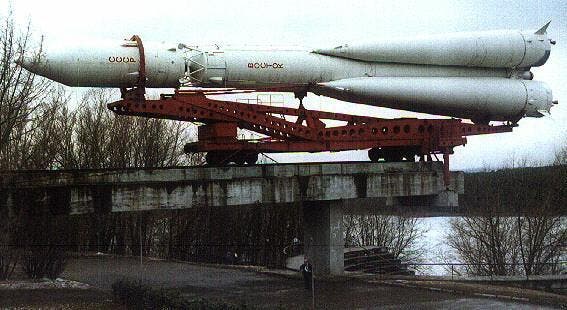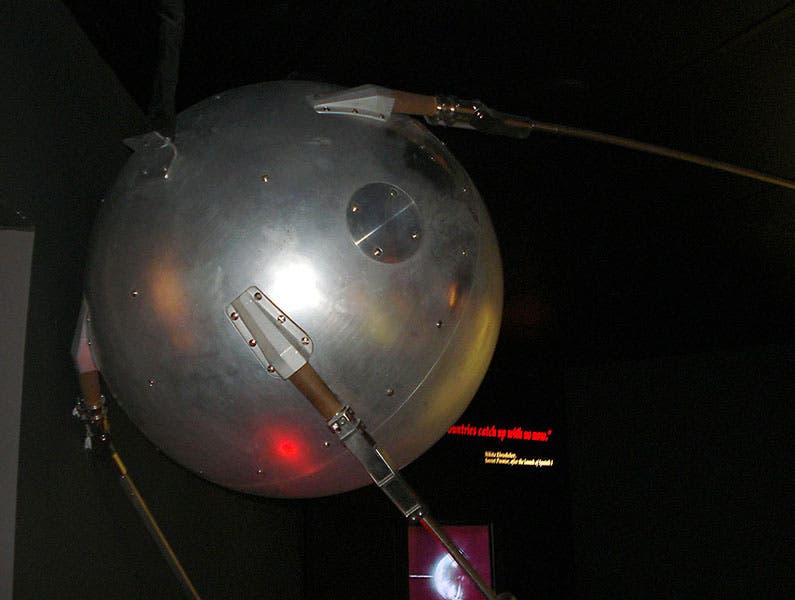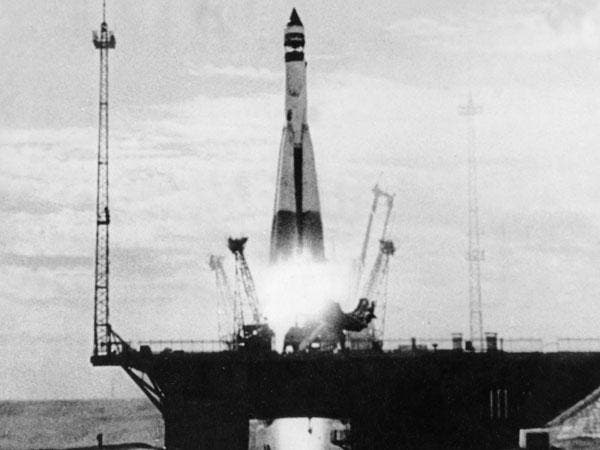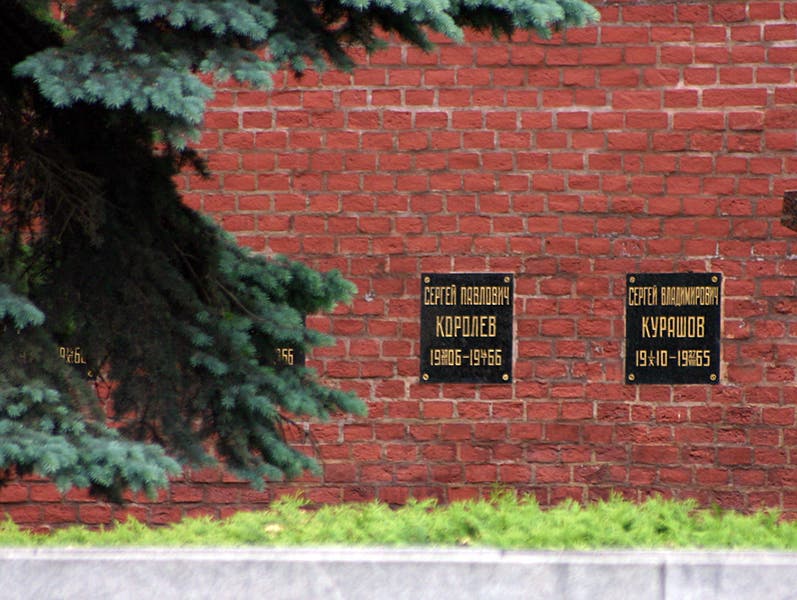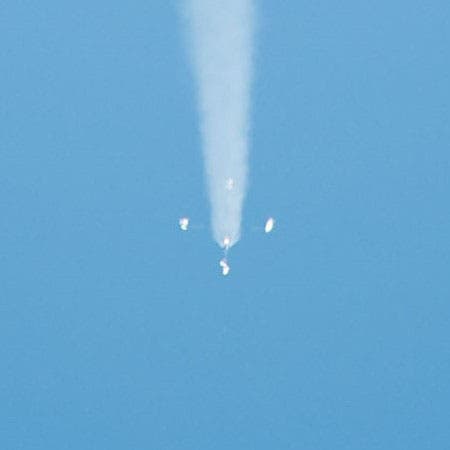Scientist of the Day - Sergei Korolev
Sergei Pavlovich Korolev, a Soviet rocket engineer, was born on Jan. 12, 1907. He became interested in flying and designing airplanes at an early age, and was an active pilot when he met a rocket enthusiast, Friedrikh Tsander, who in 1931 formed a group for investigating the possibility of space travel via rockets. The organization was called GIRD, which stood, after translation, for the Group for the Study of Reactive Motion. There is no indication that Korolev had his eyes on space before 1931, but he soon became an enthusiast, and before long, a leader in the group. In 1933, Korolev was in charge when the first Soviet rocket was successfully launched, and shortly thereafter, the first liquid-fueled rocket, all in 1933. This was 7 years after Robert Goddard had launched his rocket in the United States, and several years after the Germans had done so.
GIRD was a state-supported organization; in 1934, it was combined with another rocket group, GDL, which was experimenting with solid-fuel rockets, to form a new organization, RNII, which stood (roughly) for Reactive Propulsion Institute. Since rocket research was dead in the U.S., the Soviets might have gained a considerable advantage in any "rocket race," were it not for Stalin. After years of pouring money into rocket research (although mainly for military use, not space exploration), Stalin and the Politburo apparently felt threatened and embarked on what has been called the Great Purge or the Great Terror in 1937. The Red Army was a major target, and thousands of military personnel were arrested; the other institution to suffer was, oddly, the RNII. The four engineers in charge were arrested, and two were summarily executed. Korolev was spared in this initial purge, but a year later he was arrested, tortured and forced to confess, and sentenced to 10 years in a Gulag in Kolyma in eastern Siberia. Soviet historians would have you believe that Korolev was arrested for fiscal misconduct, but in fact he was charged with sabotage, counter-revolutionary activities, accused of being an enemy of the state, and put on the "A-List". Ninety percent of those on that list were executed; for reasons unknown, Korolev was spared at the last moment and sentenced to hard labor. But life in the Gulag was harsh, and he was tortured and beaten, once so severely that both of his jaws were broken.
When World War II started and Stalin was without technical expertise, he had a change of mind, and Korolev was transferred to a sharashka, a milder form of prison camp where prisoners did constructive work instead of hard labor. This sharashka, in Moscow, was run by Andrei Tupolev, who developed most of the Soviet aircraft before and during the war. Korolev worked on aircraft design, not rockets, but in 1945, he was given the chance to go to Germany to observe the abandoned remains of V-2 rockets at Peenemunde and other sites The Russians were astounded at how much further along the Germans were in rocketry. Korolev helped bring back V-2 parts, and quite a few German technicians, for study and inspiration.
After the War, Korolev was able to return to liquid-rocket development. He did not try to improve on the V-2, as others did, but applied his own unique ideas about the best way to build a liquid-fueled rocket. Before long, he rose again to the top of his field, as he was one of the few that not only had a technical understanding of rocketry, but was a natural leader and organizer.
In 1954, Korolev wrote a letter to Moscow advocating a program to insert a satellite into orbit, even though the Soviets had as yet no rocket capable of doing that. But in the next three years, Korolev developed such a rocket, the R-7, a beautiful machine with four rocket pods on the sides to provide initial thrust, which fell away as the main engine took over. It had its first successful flight in May of 1957, sending a payload to Kamchatka from its launching spot in the desert steppes of southern Kazakhstan. It was the world's first ICBM. And it was Korolev's design (third and fifth images).
Five months later, Korolev launched a similar rocket, but this one with a satellite payload. The rocket was called Sputnik, and the satellite Sputnik I. When it lifted into orbit on Oct. 4, 1957, and began chirping its "beep-beep" to eavesdroppers and gawkers on Earth, the Space Race was on. And the Soviet Union was well in the lead. A few months ago, we wrote a post on Sputnik I, one of the few inanimate objects to be featured as a Scientist of the Day. You can see another view of the R-7 in that post.
Koreolev was in charge of the rocket design, and of the launches themselves, for most of the Soviet space achievements of the next 5 years: Sputnik II (1957, carrying the first living creature into space, the dog Laika), Sputnik III (1958), which had a massive load compared to Sputnik I or II; Luna 1 (1959; fifth image, below), which aimed at but missed the Moon; Luna 2 (1959), which crashed into the Moon; and Luna 3 (1959, also was the subject of a former post), which took the first images of the far side of the Moon; and perhaps most impressively, the launch of Vostok 1 in 1961, which carried Yuri Gagarin into orbit, the first human to circle the globe in space (first photo).
Considering that he was truly the father of Soviet space exploration (with Konstantin Tsiolovskii being the grandfather), Korolev was barely known to his countrymen, and completely unknown outside Russia. Authorities took great pains to conceal his name, for fear of assassination; he was usually referred to as the Chief Designer, even by members of his team and by the cosmonauts. That lasted right up until Korolev’s sudden death in 1966, when he died on the operating table after a large tumor was discovered during routine abdominal surgery. Pravda then revealed his identity and praised his contribution to the Soviet space program, and his funeral was a state affair, with Leonid Brezhnev leading the mourners. Korolev’s remains were placed in a privileged memorial spot in the Kremlin wall (sixth image, below).
Many historians think that, had Korolev lived (he was only 59 when he died), the Soviets might have made the race to the Moon a very close one. For with Korolev gone, the Soviet space program fell apart, with failure following failure, and the moon race soon became a “no-contest.” The only bright spot was the R-7, which continued to launch spacecraft well into the 21st century, the most successful rocket ever built. Every time it flew, it provided another kind of memorial for Korolev, for the distinctive pattern made by the four rocket boosters as they fall away during launch is called a “Korolev Cross” (seventh image, below).
For me, the most inexplicable part of Korolev’s career is that he forgave the state for arresting him on false charges, for years of hard labor and torture, and when given the chance, was happy to help advance the goals of Soviet rocketry. He was somehow able to keep the individuals who had wronged him separate from his belief in the Soviet collective and the power of labor. He was not alone in this – tens of thousands of political prisoners worked hard in scores of sharashkas, and when finally released, went back to work as if nothing had happened. This is all very hard for westerners to understand, but it was evidently a key aspect of the Russian mindset in the first half of the 20th century
There is an excellent biography of Korolev by James Harford, titled Korolev: How One Man Masterminded the Soviet Drive to Beat America to the Moon (1997). The book is considerably enriched by Harford’s conversations with Korolev’s daughter Natasha, who also supplied many photographs that are otherwise hard to find.
Dr. William B. Ashworth, Jr., Consultant for the History of Science, Linda Hall Library and Associate Professor emeritus, Department of History, University of Missouri-Kansas City. Comments or corrections are welcome; please direct to ashworthw@umkc.edu.



